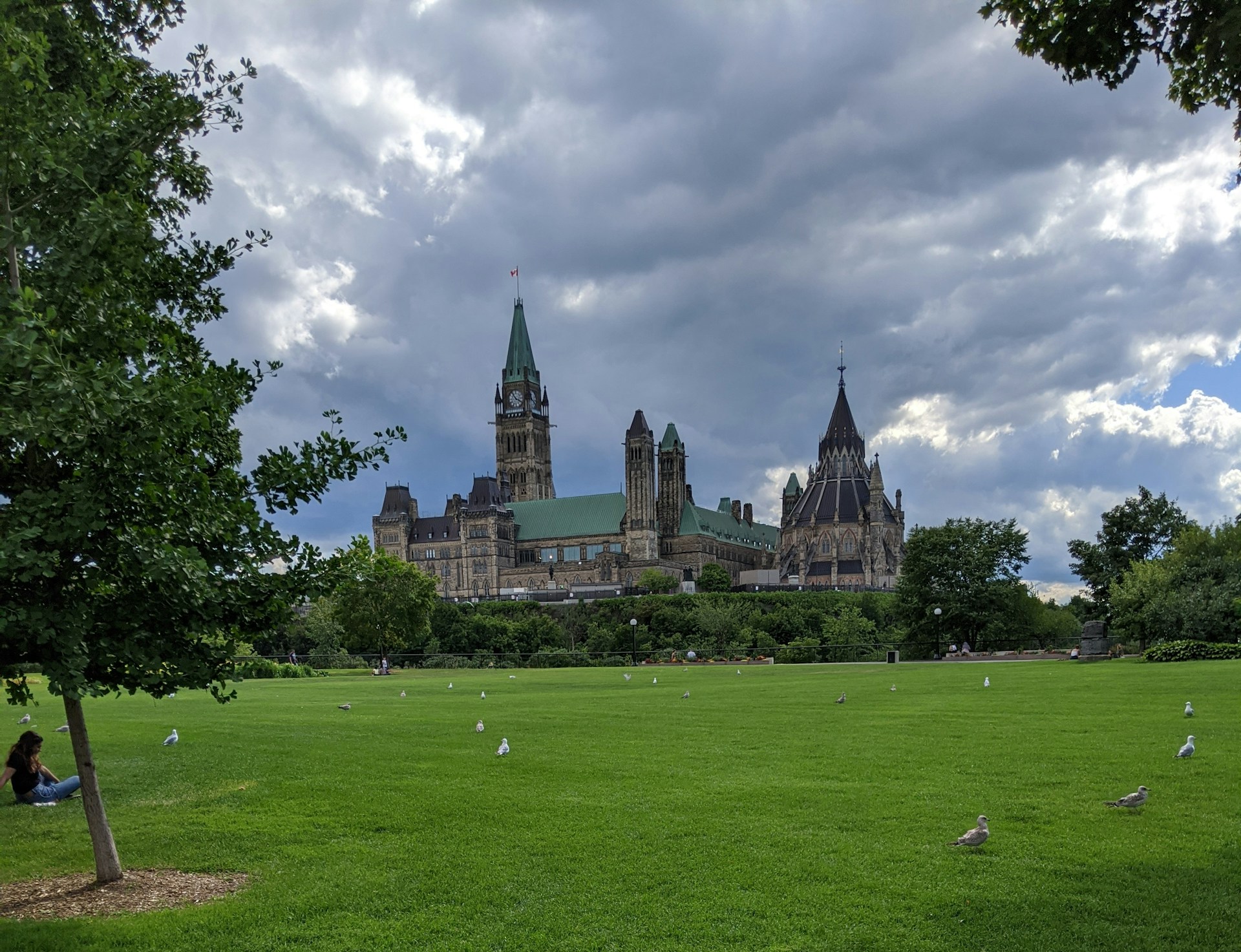Canada News
The stakes could not be higher as Canada sets its 2035 emissions target

Section 8 of the Net-Zero Act requires the 2035 target to take into account the best scientific information available, Canada’s international commitments, Indigenous knowledge, and the recommendations of the Net-Zero Advisory Body. (File Photo: Sarah Baxter/Unsplash)
The Government of Canada is in the midst of a public engagement on the 2035 greenhouse gas emissions reduction target.
The timeline is short, and the stakes could not be higher.
According to Section 7 of the Canadian Net-Zero Emissions Accountability Act (Net-Zero Act), the 2035 milestone must be set by December 2024, in time to be formally announced to other Paris Agreement members in 2025.
The risks of delaying decisive action are huge, with the European Union’s climate change service recently warning that global average temperatures have now reached 1.52 C of warming.
Why 1.5 C matters
Section 8 of the Net-Zero Act requires the 2035 target to take into account the best scientific information available, Canada’s international commitments, Indigenous knowledge, and the recommendations of the Net-Zero Advisory Body.
The scientific community is resolute that there are “robust differences” between global warming of 1.5 C and 2 C, including increases in hot extremes and heavy precipitation. For Canadians, extreme heat has been the deadliest impact so far, with at least 619 deaths caused by the 2021 heat dome alone.
A recent report found that “in 2025, Canada will experience $25 billion in losses relative to a stable-climate scenario, which is equal to 50 per cent of projected 2025 GDP growth.” Climate change related damages could reach between $78 and $101 billion annually by mid-century if adequate action is not taken.
Senior climate scientist at the University of the Bahamas Adelle Thomas notes that for island states and least-developed countries “‘one-point-five to stay alive’ is reality, it’s not a slogan.” Here and abroad, equity-seeking groups are those worst impacted.
Why participate?
The federal government’s public engagement platform is available until March 28, 2024. While not perfect — I personally felt that the questions put too much emphasis on how to prioritize actions as opposed to the pace of action and how to fairly distribute transition costs — individuals and organizations can also upload a document of their choice to contribute beyond the questions provided.
These submissions correspond to Section 13 of the Net-Zero Act, which allows any interested person to make submissions on how to respond to what the Supreme Court described as “an existential threat to human life in Canada and around the world.” The Paris Agreement also envisions target-setting as a bottom-up process, and Article 12 calls on states to enhance “education, training, public awareness, public participation and public access to information.”
Ongoing issues
Canada’s current targets under the Net-Zero Act are a 20 per cent emissions reduction (against 2005 levels) by 2026, a 40-45 per cent reduction by 2030 and achieving net-zero by 2050. The 2030 target appears in the global registry of Nationally Determined Contributions (NDC) as Canada’s pledge under Article 4(2) of the Paris Agreement.
Several issues can be identified with the current pledge which should be remedied in the 2035 target.
One of the main issues is Canada’s approach to “fair shares.” The Paris Agreement leaves it open to states to define ambition, fairness and equity in their own terms. However, there is a growing consensus that Canada’s efforts are “highly insufficient.” One study of a range of NDCs (including Canada’s) points out that defining fair shares in comparison with current emissions, or business-as-usual projections, is contrary to international environmental law as such a framework “grandfathers” in existing emissions — unfortunately, Canada’s NDCs does exactly this.
By contrast, systems and calculators do exist which allow modelling fair shares based on different assumptions about historical responsibilities and current capacity to act. Canada should explain its approach going forward, since equity is a cornerstone of the Paris Agreement.
Another major issue with the 2030 target is Canada’s stance on emissions trading, since the current NDC “recognizes that internationally transferred mitigation outcomes could complement domestic efforts.” This statement makes it impossible to understand what part of the target will be achieved through systems transformation at home and what part will be compensated by emissions trading. This ambiguity requires urgent clarity in the 2035 target.
Furthermore, while the Paris Agreement allows emissions trading, experts warn that delaying true decarbonization may also reduce innovation and limit future options.
A third and last issue is Canada’s approach to Indigenous-led climate policy. A full section of the 2030 target is dedicated to Indigenous climate leadership and includes references to Indigenous rights and a nation-to-nation relationship. However, scholars have observed on the part of the federal government a “clear unwillingness to recognize Indigenous jurisdiction” in the implementation of climate policy in Canada. This unwillingness limits Indigenous decision-making powers over land and resources.
This should be remedied, especially since “Nature is generally declining less rapidly in indigenous peoples’ land than in other lands.”
Keeping on task
Ultimately, one of the key factors in reaching the 2035 target is whether the Net-Zero Act delivers strong accountability. Indeed, both the Canadian Climate Institute and the Commissioner of the Environment and Sustainable Development have raised alarming concerns regarding the progress Canada has made towards the 2035 target — stronger accountability is essential to meet these goals.
In response to these many challenges, we must resist the temptation to go for a weak 2035 target and use the current process to think creatively about how it can be transformational and fair at the same time.![]()
Christopher Campbell-Duruflé, Assistant Professor, Lincoln Alexander School of Law, Toronto Metropolitan University
This article is republished from The Conversation under a Creative Commons license. Read the original article.





















